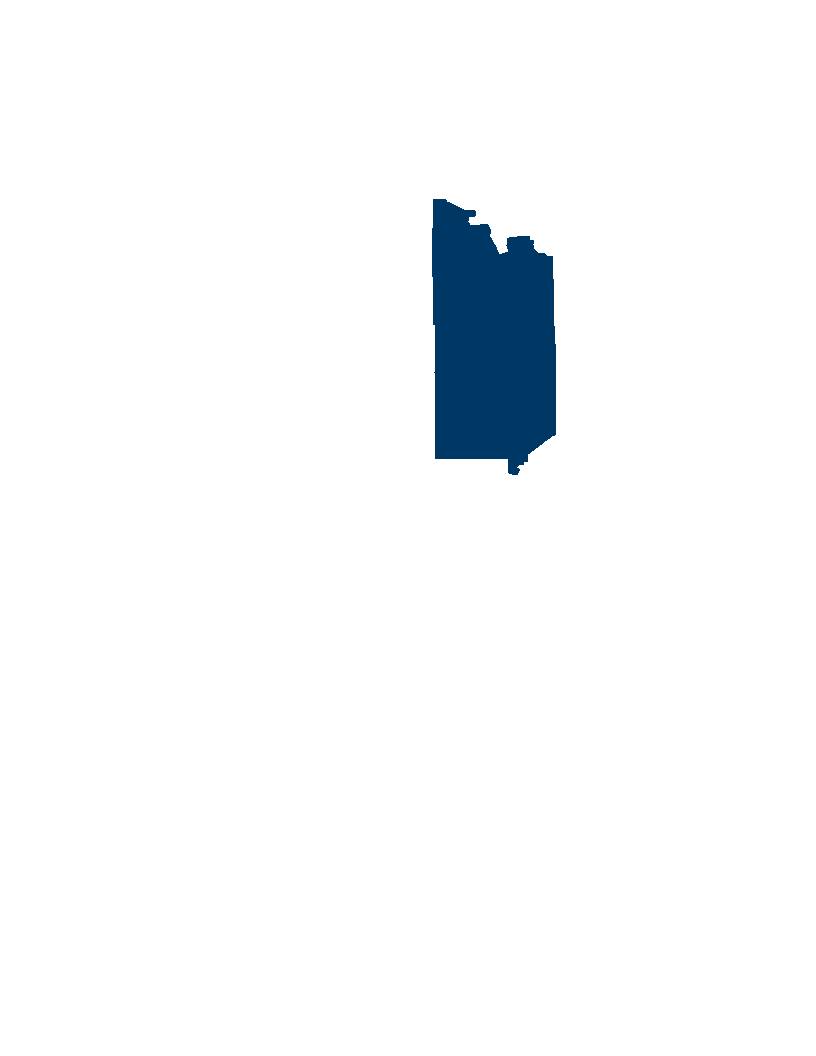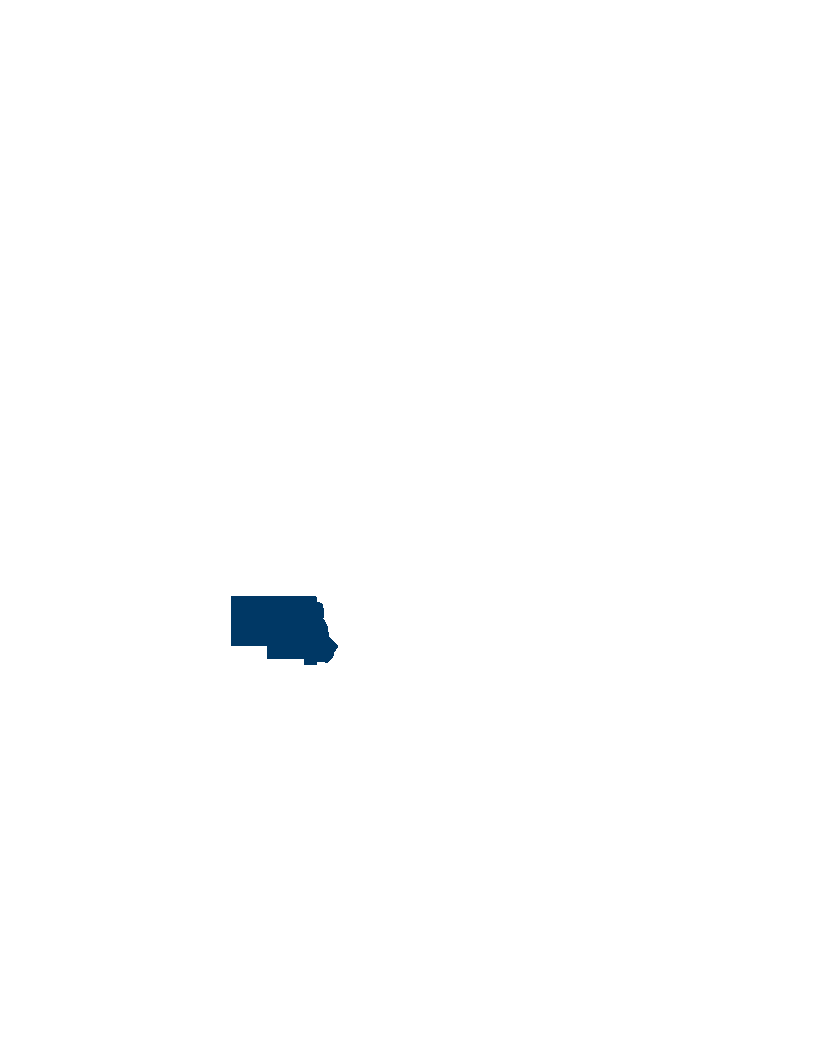Forestry Best Management Practices for Clean Water
The Minnesota DNR and the Minnesota Forest Resources Council work with forest landowners, managers and loggers to implement a set of voluntary sustainable forest management guidelines that include water quality best management practices (BMPs) to ensure sustainable habitat, clean water, and productive forest soils, all contributing to healthy watersheds. This project will monitor the implementation of these forest management guidelines and BMPs on forested watersheds in MN. Additionally, this project will identify timber harvest frequency and distribution as well as significant change to forest area including conversion of forests to other land uses, large fires, and blowdown events. An evaluation of the guideline implementation rates, watershed characteristics, and the frequency and distribution of forest change will be used to identify risks to water quality as well as strategies to reduce these risks, with the goal of maintaining high quality forested watersheds in MN. Outreach programs will be developed for forest landowners, managers and loggers throughout the target watersheds aimed at mitigating these risks such as improved implementation of specific BMPs.
Forested watersheds in MN generally produce an abundance of high quality water. Much of our forested landscape is managed as productive forest land providing timber products as well recreational opportunities and abundant wildlife. Sustainable timber harvesting in combination with application of voluntary water quality BMP's has helped to maintain water quality in Minnesota's managed forest lands. However, risks to water quality in these landscapes still remain, with rates of BMP implementation, harvesting patterns, and watershed characteristics influencing the potential for impacts to occur at any given time or place. Also, recent trends in forestland development and loss in Minnesota has increased the risk of impacts to water quality in forested landscapes. Evaluation of BMP implementation and quantification of risk factors by watershed, combined with effective outreach programs, will allow for continued utilization of working forests while maintaining functioning, healthy watersheds that produce clean water.
$650,000 the first year and $650,000 the second year are for applied research and tools, including maintaining and updating spatial data for watershed boundaries, streams, and water bodies and integrating high-resolution digital elevation data and for assessing the effectiveness of forestry best management practices for water quality.
In FY25 DNR will complete intensive field monitoring on ~100 timber harvest sites in eleven targeted watersheds in central and northern Minnesota. Aerial image acquisition and landowner contact and efforts to acquire permissions for access are currently underway. Coordination with Minnesota Logger Education Program, Sustainable Forestry Education Cooperative, and agency foresters is also currently underway to deliver trainings and workshops focused on the Minnesota Forest Resources Council Forest Management Guidelines (FMGs). We plan to continue outreach to landowners, managers and loggers about monitoring results and opportunities to improve the implementation of guidelines and reduce water quality risks.
We also plan to continue exploring ways in which statewide coverage of the canopy change analysis can feed into assessment of thresholds corresponding to varying levels of risk to water quality (WRAPS) and biodiversity (WHAF). A hydro-geomorphological risk model developed for the entire state will also be released along with appropriate guidance for its use in identifying and mitigating landscape risks through appropriate on-site BMP planning and implementation. The User’s Guide is currently near completion.
Four full seasons of data collected using the new data entry system have been fully integrated with data collected since 2009 and will become available this year.
$650,000 the first year and $650,000 the second year are for applied research and tools, including maintaining and updating spatial data for watershed boundaries, streams, and water bodies and integrating high-resolution digital elevation data and for assessing the effectiveness of forestry best management practices for water quality.
|
In FY24 DNR will complete intensive field monitoring on ~100 timber harvest sites in eleven targeted watersheds in central and northern Minnesota. Aerial image acquisition and landowner contact and efforts to acquire permissions for access are currently underway. Coordination with Minnesota Logger Education Program, Sustainable Forestry Education Cooperative, and agency foresters is also currently underway to deliver trainings and workshops focused on the Minnesota Forest Resources Council Forest Management Guidelines (FMGs). We plan to continue outreach to landowners, managers and loggers about monitoring results and opportunities to improve the implementation of guidelines and reduce water quality risks. We also plan to continue exploring ways in which statewide coverage of the canopy change analysis can feed into assessment of thresholds corresponding to varying levels of risk to water quality (WRAPS) and biodiversity (WHAF). A hydro-geomorphological risk model developed for the entire state will also be released along with appropriate guidance for its use in identifying and mitigating landscape risks through appropriate on-site BMP planning and implementation. The User’s Guide is currently near completion. Four full seasons of data collected using the new data entry system have been fully integrated with data collected since 2009 and will become available this year. |
In FY24, DNR completed intensive field monitoring on 79 timber harvest sites in three targeted watersheds in northern and central Minnesota. Sampling monitored water quality best management practices (BMPs) and other sustainable forest management guidelines. Low private landowner interest and increased contracting costs ($30K+ increase over previous year) led to lower number of monitoring sites across watersheds. Our monitoring identified certain areas where further education is recommended, such as RMZs, filter strips, erosion control, and road and landing placements. Due to issues with data quality, sites may be re-measured in winter 2024 and spring 2025 to ensure data quality is available to create a 1-year report on watershed data in early 2025. A regional report inclusive of all surveyed watersheds over the last 5 years will be published in late 2025. The Guideline Monitoring Program also assisted with four logger education trainings collaborated with UMN Extension, MFRC, MLEP, and DNR held in central and northern areas of the state during FY24, with plans to expand trainings to all other parts of Minnesota over the next 2 years.
$535000 the first year and $530000 the second year are for applied research and tools including watershed hydrologic modeling; maintaining and updating spatial data for watershed boundaries streams and water bodies and integrating high-resolution digital elevation data; and assessing effectiveness of forestry best management practices for water quality.
DNR will complete intensive field monitoring on ~100 timber harvest sites in eleven targeted watersheds in central and southeastern Minnesota. Aerial image acquisition and landowner contact and efforts to acquire permissions for access are currently underway. Coordination with Minnesota Logger Education Program, Sustainable Forestry Education Cooperative, and agency foresters is also currently underway to deliver trainings and workshops focused on the Minnesota Forest Resources Council Forest Management Guidelines (FMGs). We plan to continue outreach to landowners, managers and loggers about monitoring results and opportunities to improve the implementation of guidelines and reduce water quality risks.
We also plan to continue exploring ways in which statewide coverage of the canopy change analysis can feed into assessment of thresholds corresponding to varying levels of risk to water quality (WRAPS) and biodiversity (WHAF). A hydro-geomorphological risk model developed for the entire state will also be released along with appropriate guidance for its use in identifying and mitigating landscape risks through appropriate on-site BMP planning and implementation. The User’s Guide is currently near completion.
Three full seasons of data collected using the new data entry system have been fully integrated with data collected since 2009 and will become available this year.
|
In FY23 DNR completed intensive field monitoring on 70 timber harvest sites in ten targeted watersheds in central and southeastern Minnesota. Sampling was conducted proportionately to the number of timber harvests in each ownership class (County, Federal, Industry, NIPF, State, Tribal). We monitored water quality best management practice (BMP) and other sustainable forest management implementation. Lower private landowner participation and increased contracting costs resulted in a smaller than anticipated sample this year. Analysis of data collected in recent years of monitoring has allowed us to begin looking for spatial trends in BMP implementation and to deliver outreach to improve those trends. Examples include identification of watersheds where placement of infrastructure on top of filter strips has been observed, use of erosion control practices, trends in riparian management zone use, leave tree and coarse woody debris retention, and rutting on roads skid trails and approaches. A two-year report on watershed sample unit FMG implementation will be released in February of 2024. We also completed our first Forest Management Guideline (FMG) training with representatives from BWSR, MFRC, UMN, and DNR at the Cloquet Forestry Center as part of a restart of the guideline training program’s in-person events. |
$535000 the first year and $530000 the second year are for applied research and tools including watershed hydrologic modeling; maintaining and updating spatial data for watershed boundaries streams and water bodies and integrating high-resolution digital elevation data; and assessing effectiveness of forestry best management practices for water quality.
DNR will complete intensive field monitoring on ~100 timber harvest sites in ten targeted watersheds in northern and central Minnesota. Aerial image acquisition and landowner contact and efforts to acquire permissions for access are currently underway. Coordination with Minnesota Logger Education Program Sustainable Forestry Education Cooperative and agency foresters is also currently underway to plan trainings and workshops focused on the Minnesota Forest Resources Council Forest Management Guidelines (FMGs). We plan to continue outreach to landowners managers and loggers about monitoring results and opportunities to improve the implementation of guidelines and reduce water quality risks to the extent possible given COVID-19 mitigation guidelines and restrictions.
We plan to continue exploring ways in which statewide coverage of the canopy change analysis can feed into assessment of thresholds corresponding to varying levels of risk to water quality (WRAPS) and biodiversity (WHAF). A hydro-geomorphological risk model developed for the entire state will also be released along with appropriate guidance for its use in identifying and mitigating landscape risks through appropriate on-site BMP planning and implementation. The User's Guide is currently near completion.
Two full seasons of data collected using the new data entry system are now available. This will allow GMP staff to complete a two-year report on watershed sample unit FMG implementation in early February of 2022.
DNR completed intensive field monitoring on 75 timber harvest sites in ten targeted watersheds in northern and central Minnesota. Sampling was conducted proportionately to the number of timber harvests in each ownership class (County, Federal, Industry, NIPF, State, Tribal). We monitored water quality best management practice (BMP) and other sustainable forest management implementation. Lower private landowner participation and increased contracting costs resulted in a smaller than anticipated sample this year.
During FY22, we further refined our new data entry system for GMP, utilizing ArcGIS Portal, Collector, and Survey123 for collection and storage of spatial and survey data related to monitored harvest sites. We also developed scripted data compilation and reporting methods using this new system.
Analysis of data collected in recent years of monitoring has allowed us to begin looking for spatial trends in BMP implementation and to deliver outreach to improve those trends. Examples include identification of watersheds where placement of infrastructure on top of filter strips has been observed, use of erosion control practices, trends in riparian management zone use, leave tree and coarse woody debris retention, and rutting on roads skid trails and approaches. A two-year report on watershed sample unit FMG implementation was released in February of 2022.
$700000 the first year and $700000 the second year are for applied research and tools including watershed hydrologic modeling; maintaining and updating spatial data for watershed boundaries streams and water bodies and integrating high-resolution digital elevation data; and assessing effectiveness of forestry best management practices for water quality.
DNR will complete intensive field monitoring on ~100 timber harvest sites in seven targeted watersheds in northern and central Minnesota. Aerial image acquisition and landowner contact and efforts to acquire permissions for access are currently underway. Coordination with DNR Private Forest Management Foresters (PFM) to help us connect with private landowners and future workshops is in progress. We plan to continue outreach to landowners managers and loggers about monitoring results and opportunities to improve the implementation of guidelines and reduce water quality risks to the extent possible given COVID-19 mitigation guidelines and restrictions.
We plan to continue exploring ways in which statewide coverage of the canopy change analysis can feed into assessment of thresholds corresponding to varying levels of risk to water quality (WRAPS) and biodiversity (WHAF). A hydrogeomorphological risk model developed for the entire state will also be released along with appropriate guidance for its use in identifying and mitigating landscape risks through appropriate on-site BMP planning and implementation.
A full season of data collected using the new data entry system will become available allowing GMP staff to develop scripted methods to integrate new monitoring observations with historic data sets and begin providing site-level and watershed/ownership summary reports via the online reporting application described in FY20 Outcomes.
DNR completed intensive field monitoring on 92 timber harvest sites in seven targeted watersheds in northern and central Minnesota. Direct GMP contact with non-industrial private forest owners allowed us to achieve a good sample of this important demographic this year. We monitored water quality best management practice (BMP) and other sustainable forest management implementation.
During FY21 we further refined our new data entry system for GMP utilizing ArcGIS Portal Collector and Survey123 for collection and storage of spatial and survey data related to monitored harvest sites. We also developed scripted data compilation and reporting methods using this new system.
The Beta version of an online reporting application continues to contribute to summarization and reporting of monitoring results. Analysis of data collected in recent years of monitoring has allowed us to begin looking for spatial trends in BMP implementation and to deliver outreach to improve those trends. Examples include identification of watersheds where placement of infrastructure on top of filter strips has been observed use of erosion control practices trends in riparian management zone use leave tree and coarse woody debris retention and rutting on roads skid trails and approaches. We are currently working with MNIT to identify a hosting solution for the reporting application.
$700000 the first year and $700000 the second year are for applied research and tools including watershed hydrologic modeling; maintaining and updating spatial data for watershed boundaries streams and water bodies and integrating high-resolution digital elevation data; and assessing effectiveness of forestry best management practices for water quality.
DNR will complete intensive field monitoring on ~100 timber harvest sites in five targeted watersheds in northern and central Minnesota. Aerial image acquisition and landowner contact and efforts to acquire permissions for access are currently underway. Coordination with DNR Private Forest Management Foresters (PFM) to help us connect with private landowners and future workshops is in progress.
We have also begun exploring ways in which statewide coverage of the canopy change analysis can feed into assessment of thresholds corresponding to varying levels of risk to water quality (WRAPS) and biodiversity (WHAF). Testing and final deployment of the new data entry system is currently underway and will be completed by May 2020.
Reporting for monitoring data collected in FY18-19 will be completed in FY20 and synthesis of data from the past cycle of monitoring will be made available to stakeholders in the form of written reports watershed maps interactive summaries targeted outreach and BMP training events. Analysis of data collected over the past five years of monitoring across the entire forested landscape has allowed us to begin looking for spatial trends in BMP implementation and to deliver outreach and training in an attempt to improve those trends. Examples include identification of: watersheds where placement of infrastructure on top of filter strips has been observed trends in riparian management zone use leave tree and coarse woody debris retention rutting on roads skid trails and approaches and other issues pertinent to water quality and other forest resources and will be completed in February 2020.
In FY20 DNR completed intensive field monitoring on 89 timber harvest sites in five targeted watersheds in northern and central Minnesota. Coordination with DNR Private Forest Management Foresters (PFM) helped us to connect with private landowners. We managed monitoring of water quality best management practice (BMP) and other sustainable forest management implementation.
During FY20 we also completed testing and final deployment of a new data entry system for GMP utilizing ArcGIS Portal Collector and Survey123 for collection and storage of spatial and survey data related to monitored harvest sites.
The Beta version of an online reporting application contributed substantially to summarization and reporting of monitoring results. Tabular reports from the application have contributed substantially to development of both the 2018 Guideline Monitoring Report and the 2014-2018 Summary Report. Analysis of data collected in recent years of monitoring has allowed us to begin looking for spatial trends in BMP implementation and to deliver outreach and training in an attempt to improve those trends. Examples include identification of watersheds where placement of infrastructure on top of filter strips has been observed trends in riparian management zone use leave tree and coarse woody debris retention and rutting on roads skid trails and approaches.
$675000 the first year and $675000 the second year are for applied research and tools including watershed hydrologic modeling; maintaining and updating spatial data for watershed boundaries streams and water bodies and integrating high-resolution digital elevation data; and assessing effectiveness of forestry best management practices for water quality.
In FY19 the DNR will complete intensive field monitoring of 93 timber harvest sites in eight targeted watersheds in northern Minnesota. For these eight watersheds during the summer we will oversee monitoring of water quality best management practice (BMP) implementation and implementation of other sustainable forest management guidelines on 93 timber harvest sites. We will continue outreach to landowners managers and loggers. This work will include: 1) site-specific feedback about monitoring results and opportunities to improve the implementation of guidelines and reduce water quality risks; 2) working with DNR Private Forest Management foresters and Soil & Water Conservation Districts to develop strategies for outreach to private landowners in monitored watersheds; and 3) contributing to watershed restoration and protection strategies (WRAPS) and watershed planning. Also in FY19 we will begin overhauling our Guideline Monitoring application. We will also review the past five years of monitoring which has covered the entire forested landscape looking for adverse trends and deliver outreach and training in an attempt to change those trends.
DNR completed intensive field monitoring of 83 timber harvest sites in eight targeted watersheds in northern Minnesota. For these eight watersheds we managed monitoring of water quality best management practice (BMP) and other sustainable forest management implementation. We continued outreach to landowners managers and loggers including: 1) site-specific feedback about monitoring results and opportunities to improve the implementation of guidelines and reduce water quality risks; 2) working with DNR Private Forest Management foresters and Soil & Water Conservation Districts to develop strategies for outreach to private landowners in monitored watersheds; and 3) contributing to watershed restoration and protection strategies (WRAPS) and watershed planning.
Additional work was coordinated with researchers at the University of Minnesota Department of Forest Resources to manage our field data compile historic trends and develop a Beta version of an online reporting application capable of summarizing data collected by the Program since 2009. The reporting application uses a selected set of thematic filters including watershed sample units MFRC landscape regions counties and land ownership to summarize monitoring results. Reporting is provided in tabular form consistent with recent written reports. Additional spatial analyses relating land use forest cover and hydrologic features on a watershed sample unit basis are also made available.
$675000 the first year and $675000 the second year are for applied research and tools including watershed hydrologic modeling; maintaining and updating spatial data for watershed boundaries streams and water bodies and integrating high-resolution digital elevation data; and assessing effectiveness of forestry best management practices for water quality.
In FY18 the DNR will complete intensive field monitoring of 98 timber harvest sites in nine targeted watersheds in northern Minnesota. We will also analyze the distribution of timber harvest and forest change on forest land in eight northern Minnesota watersheds. For these eight watersheds during the summer we will oversee monitoring of water quality best management practice (BMP) implementation and implementation of other sustainable forest management guideline on 80 to 100 timber harvest sites.
We will continue activities to reach out to forest landowners managers and loggers including:
- Site-specific feedback about monitoring results and opportunities to improve the implementation of guidelines and reduce water quality risks.
- Working with DNR Private Forest Management foresters and Soil & Water Conservation Districts to develop strategies for outreach to small private landowners in monitored watersheds.
- Contributing to developing strategies for the Watershed Restoration and Protection Strategies process in forested watersheds.
In February we will submit our biennial Guideline Implementation Monitoring Report to the MN Forest Resource Council (MFRC). The report will summarize results from implementation monitoring on 169 sites in 19 watersheds during the summer and fall of FY16 and FY17. DNR and MFRC staff will use this information to continue identifying water quality risk factors and developing strategies to reduce risks in targeted watersheds.
In FY18 the DNR completed intensive field monitoring of 98 timber harvest sites in nine targeted watersheds in northern Minnesota and began monitoring water quality best management practice (BMP) implementation and implementation of other sustainable forest management guidelines on 93 timber harvest sites in northern Minnesota. In February 2018 we submitted our biennial Guideline Implementation Monitoring Report to the MN Forest Resource Council (MFRC). The report summarized results from implementation monitoring of 169 sites in 19 watersheds during the summer and fall of FY16 and FY17. DNR and MFRC staff use this information to continue identifying water quality risk factors and developing strategies to reduce risks in targeted watersheds and presented this information at several venues in FY18. They also shared results with landowners and land managers whose sites were monitored and helped them identify opportunities to better implement guidelines and reduce water quality risks. DNR Private Forest Management Foresters helped us connect with private land owners to improve access for monitoring private forest lands and pave the way for future workshops to improve the implementation of guidelines and water quality BMPs.
(g) $675000 the first year and $675000the second year are for applied research and tools including watershed hydrologic modeling; maintaining and updating spatial data for watershed boundaries streams and water bodies and integrating high-resolution digital elevation data; assessing effectiveness of forestry best management practices for water quality; and developing a biomonitoring database.
In FY17 the DNR will complete intensive field monitoring of 80 timber harvest sites in 12 targeted watersheds in central and southeastern Minnesota. We will analyze the distribution of timber harvest and forest change on forestland in 38 forested watersheds across the state in order to select 10 watersheds for additional intensive monitoring of timber harvest sites. For these 10 watersheds we will execute a contract to begin monitoring the implementation of water quality best management practices (BMPs) and other sustainable forest management guidelines on 80 to 100 timber harvest sites.
In FY17 the DNR completed intensive field monitoring of 80 timber harvest sites in 12 targeted watersheds in central and southeastern Minnesota and identified 100 additional timber harvest sites in nine forested watersheds for intensive monitoring to be completed in FY18. We also analyzed the distribution of timber harvest and forest change on 38 selected major watersheds in northern Minnesota while developing focused information on nine target watersheds. The resulting information documents how well water quality best management practices (BMPs) and other sustainable forest management guidelines have been implemented.
Staff also continued using this information to identify water quality risk factors and develop strategies to reduce risks in targeted watersheds. They presented this information at several venues. They also shared results with landowners and land managers whose sites were monitored and helped them identify opportunities to better implement guidelines and reduce water quality risks.
Staff utilized the DNR’s Private Forest Management Foresters to better connect with small private land owners to improve access to monitoring private forest lands and to pave the way for future workshops addressing ways to improve the implementation of guidelines and water quality BMPs.
(g) $675000 the first year and $675000the second year are for applied research and tools including watershed hydrologic modeling; maintaining and updating spatial data for watershed boundaries streams and water bodies and integrating high-resolution digital elevation data; assessing effectiveness of forestry best management practices for water quality; and developing a biomonitoring database.
In FY16 the DNR will identify the distribution of timber harvest and forest change on 12 selected HUC8 watershed units (see below). The DNR will check logging sites to make sure sustainable forest management guidelines and water quality BMPs are properly carried out. We will look at specific watershed characteristics to identify water quality risk factors on the selected areas and we will develop strategies to reduce risks in the targeted watersheds.
We will continue and further develop outreach to forest landowners managers and loggers to implement strategies including:
-A comprehensive report on sustainable forest management guideline implementation
-Continued site-specific feedback to land owners/managers and loggers of sites monitored during summer of 2014 and 2015. Feedback will address results of site monitoring and identification of opportunities for improvement of guideline implementation and water quality risk reduction
-Work with the recently rebuilt Cooperative Forest Management Program to better connect with small private forest land owners
-Continued interaction and contribution to Watershed Restoration and Protection Strategies
Work with the Minnesota Forest Recourses Council (MFRC) Region Landscape Planning program to address the risk factors that were identified in the watershed analyses and to improve how BMPs are carried out.
In FY16 the DNR completed intensive field monitoring on 79 timber harvest sites in seven northern Minnesota watersheds and identified 80 additional timber harvest sites in 12 central and southeastern Minnesota watersheds for intensive monitoring to be done in FY17. The resulting information documents how well water quality best management practices (BMPs) and other sustainable forest management guidelines have been implemented.
Staff completed a comprehensive report on sites monitored in calendar years 2014 and 2015 available at http://mn.gov/frc/site-level-forest-management-reports.html. Staff continued to use information from these reports to identify water quality risk factors and develop strategies to reduce risks in targeted watersheds. They presented this information at several venues. They shared results with landowners and land managers whose sites were monitored and helped them identify opportunities to better implement guidelines and reduce water quality risks.
DNR Cooperative Forest Management foresters collaborated with Soil & Water Conservation Districts (SWCDs) to better connect with small private landowners in targeted watersheds improving access to monitoring sites and paving the way for workshops on improved implementation of guidelines. Staff worked with the Minnesota Logger Education Program to develop this type of workshop for logging professionals. Staff collaborated with the Minnesota Forest Resources Council on strategies for outreach and education to improve implementation of guidelines and aid the development of regional landscape plans. Finally staff continued to contribute information from reports to the development of Watershed Restoration and Protection Strategies (WRAPS).
$675000 the first year and $675000
the second year are for applied research
and tools including watershed hydrologic
modeling; maintaining and updating spatial
data for watershed boundaries streams and
water bodies and integrating high-resolution
digital elevation data; assessing effectiveness
of forestry best management practices for
water quality; and developing an ecological
monitoring database.
In FY 15 the DNR will detect where timber harvest and other forest changes took place on all forested watersheds statewide. We will monitor the implementation of sustainable forest management guidelines and water quality BMPs on timber harvest sites across the four watersheds selected in FY14 and an additional seven selected in FY15. The combined information along with specific watershed characteristics will be used to identify water quality risk factors (based on timber harvesting frequency and distribution level of BMP implementation and additional watershed characteristics) within target watersheds for FY14 &15. We will develop strategies to reduce risks in the targeted watersheds.
We will develop outreach programs geared toward implementing those strategies for forest landowners managers and loggers. These programs will include: 1) workshops addressing erosion control on forest access roads and timber harvesting sites; 2) feedback to land managers and loggers of sites monitored in FY14 (results of site monitoring and identifying opportunities for improvement) 3) a BMP field manual for loggers and land managers.
In FY 15 the DNR identified that forests were disturbed in a total of 38 watersheds (HUC 8) and 27 counties in Minnesota. We selected 80 harvest sites in a subset of seven watersheds for monitoring the implementation of sustainable forest management guidelines and water quality BMPs.* We hired contractors to collect monitoring data which we will analyze in FY16.
We also completed field monitoring at an additional 59 sites that were started in FY2014 sites in the Mississippi Headwaters Rum River Lake Superior South and Lake Superior North watersheds. We synthesized data for these sites and evaluated them for guideline compliance. We presented the information to various groups (see below). The final report will be done in February of 2016.
In collaboration with the University of Minnesota and the Minnesota Logger Education Program we conducted two workshops addressing erosion control on forest access roads and timber harvesting sites in fall/winter of 2014. We also made several presentations to disseminate Guideline Monitoring results including talking to land managers at the monitoring sites in an ongoing process providing feedback. We also helped develop a BMP field manual for loggers and land managers.
We evaluated forest disturbance/change between the years 2000 to 2015 on all forested watersheds in Minnesota. We looked at specific watershed characteristics to identify water quality risk factors including: proximity of forest disturbances to water features roads and road crossings; soil drainage type texture and erodibility; current and past land cover and land use change; and topographic characteristics (slope flow direction and accumulation). We used these data layers along with several from the DNR’s Watershed Health Assessment Framework to create a preliminary risk index.
$675000 the first year and $675000
the second year are for applied research
and tools including watershed hydrologic
modeling; maintaining and updating spatial
data for watershed boundaries streams and
water bodies and integrating high-resolution
digital elevation data; assessing effectiveness
of forestry best management practices for
water quality; and developing an ecological
monitoring database.
In FY 14 DNR will monitor the implementation of sustainable forest management guidelines and water quality BMPs on 80 – 100 timber harvest sites across 4 forested watersheds. Distribution of timber harvest and other forest changes will also be identified in these watersheds. The combined information along with specific watershed characteristics will be used to identify water quality risk factors within target watersheds and strategies to reduce those risks. Outreach programs will then be developed to work with forest landowners managers and loggers to implement strategies.
Specific outcomes include:
-Establishment of a protocol for identifying forest change at the watershed level that can also be applied statewide.
-Identify the distribution of timber harvest and forest change in four watersheds including Mississippi Headwaters Rum River North Lake Superior and South Lake Superior.
-Monitor the implementation of forest management guidelines and water quality BMPs through on-site investigation on a total of 80-100 sites across these 4 watersheds.
-Progress in development of a protocol for identifying level of risk to water quality due to timber harvesting frequency and distribution level of BMP implementation and additional watershed characteristics
Outreach programs based on above data will be developed in FY15.
In FY14 DNR foresters identified the distribution of timber harvest and forest change in four watersheds: Mississippi Headwaters Rum River Lake Superior South and Lake Superior North. DNR established a protocol for identifying forest change at the watershed level; this protocol will be refined to better differentiate among various forest change types. For example some partial harvesting is difficult to distinguish from wind damage. Also time sequence is required to detect difference between forest harvesting and some land conversions such as pasturing.
In the four target watersheds foresters monitored 34 sites for implementation of forest management guidelines and water quality best management practices. About 1/3 of the sites planned for monitoring in FY14 were completed; the remainder will be completed by Sept 31 2014. Contract work was delayed due to length of time required to get contract approvals.
DNR is also developing a protocol for identifying level of risk to water quality due to timber harvesting frequency and distribution level of BMP implementation and additional watershed characteristics. The primary progress on this task was hiring a Research Analysis Specialist whose responsibilities will be focused development of this protocol. The hiring process was completed in early FY15 and significant progress will be made on this protocol in the coming year.
Outreach development in FY14 included curriculum and video development for erosion control workshops to be held in the fall of 2014 and help creating a user-friendly field guide focused on forestry water quality BMPs which will be completed in FY15.

































